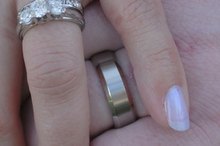How to Remove a Nipple Piercing
Ouch! You’re hurting and know that if you don’t remove your nipple piercing, an infection is not only possible but probable. The area around the nipple is red, and after several years of rubbing against your shirt or bra, the pain isn’t worth the effect.
Removing a nipple piercing isn’t difficult when there is no infection, but it is more troublesome when there is one. If your piercing is less than a year old, it may not have healed entirely, and removing it can be painful, especially if you haven’t twisted it during that year to help the insertion area heal.
Anatomy of the Nipple
Unlike ear piercings that run through cartilage, nipple piercings penetrate through a wall of nerves and for women, a duct that feeds milk to an infant. When removing a nipple piercing, sterilization is the most important step, as any damage to the milk duct can render a female unable to breastfeed.
Male nipples aren’t superfluous. In truth, nipples develop in the womb before an embryo develops a male or female orientation. So, we all start out as gender neutral and enter this world as a male or female. In men, the nipple is an erogenous zone as well as an indicator of what may be happening within the breast area.
Stress and Removing a Nipple Piercing
Nipple-Piercing Facts
Learn More
The stress of removing a nipple piercing can be the same as the stress that develops before going to a dentist. Your breath starts to become more shallow, and hyperventilating may occur. Blood pressure decreases.
Relieve the pre-removal stress by meditating before the procedure. Do breathing exercises and drink more water than usual. Don’t drink coffee, as it increases your stress hormones. Caffeine-free tea and even a cup of hot chocolate are calming.
If pain is your enemy and your tolerance level is low, consider applying a lidocaine gel to the nipple area before trying to remove the piercing. It numbs the nerves just under the skin, but you may still feel a bit of pain since the piercing goes deeper than the surface. Removing the nipple jewelry yourself is not always a good idea, as you don’t know how you’ll respond. Having someone nearby to catch you in a faint may just save your life.
Lay Out the Supplies
Gather the following supplies:
- Surgical gloves
- Pliers if you’re removing a captive ring
- Lubricant for a stuck barbell ring
- Lidocaine-based numbing gel
- Vitamin E oil
Wearing surgical gloves, numb the nipple and gently unscrew the barbell end either clockwise or counterclockwise. Once off, pull out the ring slowly. If the ball end is stuck, vitamin E oil adds lubrication, and the gloves help create friction. A ball-grabber tool may also help.
A captive ring is more difficult because when you remove the ball, it falls off. Position a towel underneath the nipple area and use pliers to gently separate the ends of the ring. The ball will fall off. Rotate the ring through the nipple to remove it.
Your piercing hole may take anywhere from nine to 12 months to completely heal, and the area is prone to infections. Wash the area daily with anti-bacterial soap or a sea salt solution and avoid tight-fitting clothes that may rub against the surface of the nipple. See a doctor if redness occurs.
Related Articles
References
Resources
Writer Bio
Jann Seal is published in magazines throughout the country and is noted for her design and decor articles and celebrity *in-home* interviews. An English degree from the University of Maryland and extensive travels and relocations to other countries have added to her decorating insight.









